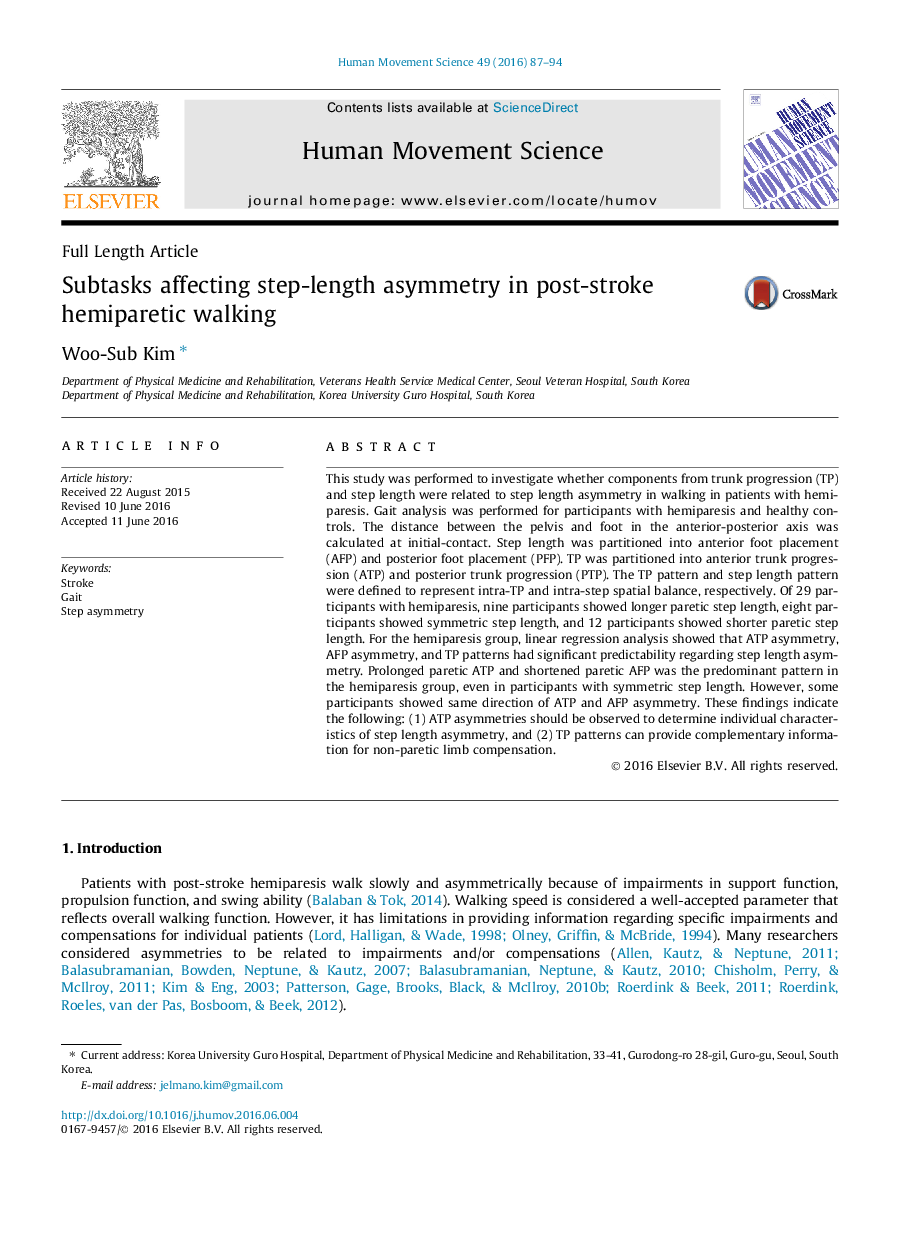| Article ID | Journal | Published Year | Pages | File Type |
|---|---|---|---|---|
| 7291183 | Human Movement Science | 2016 | 8 Pages |
Abstract
This study was performed to investigate whether components from trunk progression (TP) and step length were related to step length asymmetry in walking in patients with hemiparesis. Gait analysis was performed for participants with hemiparesis and healthy controls. The distance between the pelvis and foot in the anterior-posterior axis was calculated at initial-contact. Step length was partitioned into anterior foot placement (AFP) and posterior foot placement (PFP). TP was partitioned into anterior trunk progression (ATP) and posterior trunk progression (PTP). The TP pattern and step length pattern were defined to represent intra-TP and intra-step spatial balance, respectively. Of 29 participants with hemiparesis, nine participants showed longer paretic step length, eight participants showed symmetric step length, and 12 participants showed shorter paretic step length. For the hemiparesis group, linear regression analysis showed that ATP asymmetry, AFP asymmetry, and TP patterns had significant predictability regarding step length asymmetry. Prolonged paretic ATP and shortened paretic AFP was the predominant pattern in the hemiparesis group, even in participants with symmetric step length. However, some participants showed same direction of ATP and AFP asymmetry. These findings indicate the following: (1) ATP asymmetries should be observed to determine individual characteristics of step length asymmetry, and (2) TP patterns can provide complementary information for non-paretic limb compensation.
Related Topics
Life Sciences
Neuroscience
Cognitive Neuroscience
Authors
Woo-Sub Kim,
